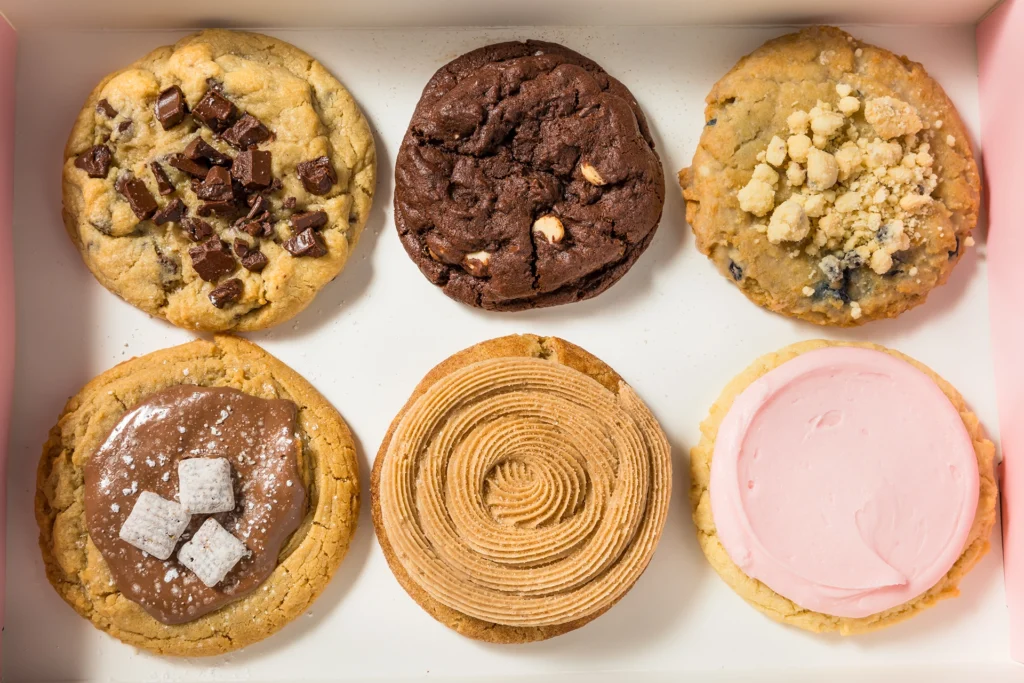The rise of “spooky” kitchens
If you’re reading this, chances are you’ve heard the term “ghost kitchen” a lot in the past couple of years.
You’ve probably also heard terms like dark kitchen, cloud kitchen, and shadow kitchen. For better or worse, these spooky kitchen terms reflect the way the restaurant industry is grappling with the rapid emergence of new market-driven and tech-enabled restaurant models.
As a restaurant branding specialist, I will readily admit that even after lots of research—and working with clients in this space—I was still confused about what exactly these terms mean, how they’re the same, and how they’re different. And as a word nerd with a love for naming things, I can’t sleep soundly knowing that this confusion could go on for years to come.
This problem requires urgent attention. As new restaurant models gain momentum, they’re not only top-of-mind for industry folks—they will become top-of-mind for consumers too. Insiders may tolerate the muddle for a while, but confusing consumers hurts the restaurant space as a whole. In an industry where consumers demand transparency and trustworthiness, spooky kitchen terms invite suspicion.
The problem extends beyond the spooky terms listed above. Below is a selection of terms I’ve come across so far:
Virtual Restaurant, Ghost Restaurant, Commissary Kitchen, Ghost Kitchen, Blackbox Kitchen, Virtual Kitchen, Dark Kitchen, Shadow Kitchen, Cloud Kitchen, Central Kitchen, Rent-a-Kitchen, Off-premise Kitchen, Shared Kitchen, Incubator Kitchen, Cloud Commissary, Delivery-only Brand, Virtual Brand, Digital Restaurant Brand.
In an effort to clear things up (or at least provoke some conversation), I’ve sorted through these terms and evaluated them on popularity, clarity, and perception to produce a new glossary of terminology and definitions that can help us move into the future with confidence.
Note: when we’re talking about where food is made, we’re talking about kitchens. When we’re talking about how the food is and experience is delivered, we’re talking about restaurants.
Here it is for consideration and feedback.
Restaurant Model Glossary
Traditional Restaurant
A restaurant with an attached kitchen that offers dine-in and may offer takeout, drive-through, delivery, curbside delivery, or any combination of these.
With so many new models at play, we can’t just assume that “restaurant” means a traditional restaurant anymore.
Flextaurant
A non-traditional restaurant and/or food production facility with food produced in a central kitchen, a kitchen space belonging to another brand, or a mobile kitchen, e.g. a food truck.
In contrast with Traditional Restaurants, Flextaurants are an umbrella term that includes everything that follows:
Central Kitchen
A food production and storage facility with no attached dine-in restaurant.
Shared Central Kitchen
A Central Kitchen that leases some or all of its capacity to other brands.
Private Central Kitchen
A Central Kitchen that is wholly owned by a single entity and used exclusively for the production of one or more brands of food for that entity.
Virtual Restaurant
A restaurant brand with food produced in a central kitchen or traditional restaurant under a different brand than that restaurant, available for delivery and sometimes for pickup.
Virtual Food Hall
A collection of Virtual Restaurants presented to consumers via a shared ordering platform.
Owned Virtual Food Hall
A virtual food hall in which the brands and products being offered are owned by the entity that is retailing them.
Curated Virtual Food Hall
A virtual food hall in which the brands and products being offered are owned by entities other than the retailer.
The flexibility of Virtual Restaurants offers exciting opportunities for the virtual-equivalents of traditional food halls. One such example (and a Vigor client) is Scratch Kitchen in Boulder, Colorado. They’re a Virtual Food Hall currently offering 7 brands all operating out of one location.
Runner-up Terminology
As you read through the glossary, I’m sure you wondered why some more popular terms weren’t included. Here are some runner-up terms and why I think they fall short on either popularity, clarity, or perception.
Ghost Kitchen
Wins the popularity contest, but loses on clarity (is the food made for or by ghosts? Spooky!) and perception (what are they hiding?)
Commissary Kitchen
Helpful when referring to a central kitchen, but strongly associated with institutional food, which can create issues of clarity and perception. Best to let this one refer to what it’s always referred to, rather than loop it into the Flextaurant space.
Blackbox Kitchen
Not very popular, and explicitly states that what’s happening behind closed doors is some kind of hidden secret—the opposite of what we want for positive perceptions.
Virtual Kitchen
Seems promising at first blush, except that in a Virtual Kitchen model, the only thing that isn’t virtual is the kitchen. A contradiction in terms.
Dark Kitchen
Unless someone didn’t pay the power bill, this isn’t a term that should be used. Too foreboding.
Shadow Kitchen
We’re making food, not casting spells.
Cloud Kitchen
Actually a very promising term—it’s popular, it feels tech-forward, descriptive, and positive. But, easily confused with the CloudKitchens ® brand name.
Looking Forward
As part of my research for this article, I consulted with Jake Malanoski of Scratch Kitchen to get an insider perspective on the Flextaurant space. He pointed to several emerging models that aren’t even addressed here. The most interesting are what we might call development kitchens, which are solely focused on creating new menus and brands to license to others for production and delivery. In a way, this is the natural next step in the evolution from traditional restaurants, to flextaurants, to pure intellectual property development. Oh, and those enigmatic NFTs we’ve all been hearing about? I’m sure they’ll be intersecting with the restaurant space as well.
To me, the most exciting takeaway from all of this change and complexity is something pretty simple: for restaurants, technology is enabling more creativity. This creativity is on the entrepreneurial side, the branding side, and the culinary side. Flextaurants offer a brave new world of innovation, as well as new challenges in how best to create connected, meaningful brand experiences for consumers. And that’s something worth talking about.


